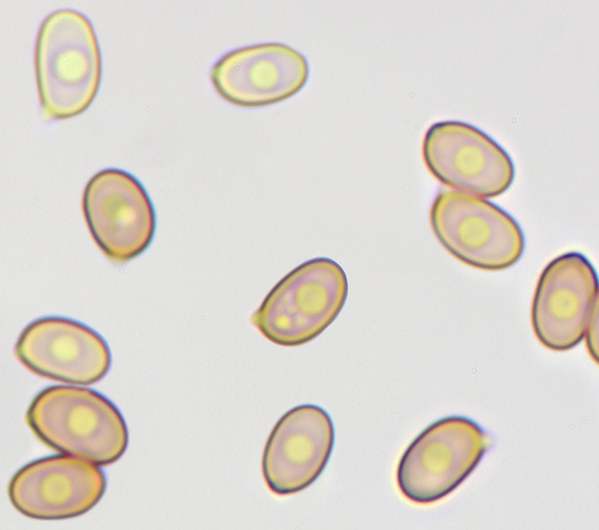Agaricus comtulus Fr. - Mini Mushroom
Phylum: Basidiomycota - Class: Agaricomycetes - Order: Agaricales - Family: Agaricaceae
Distribution - Taxonomic History - Etymology - Identification - Culinary Notes - Reference Sources
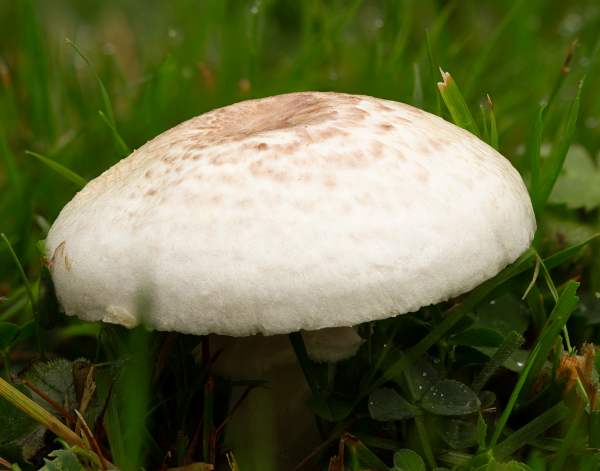
Small but rather attractive, this member of the Agaricus genus is called Mini Mushroom in the British Mycological Society's list of English names of fungi; however, in the recent past it has often been referred to by the alternative English common name Ornamented Mushroom.
Distribution
Widespread but only occasionally recorded in Britain and Ireland, the Mini Mushroom fruits in parks, meadows, garden lawns and other grassy habitats and occasionally in deciduous woodlands, either singly or in small groups. Found occasionally across much of mainland Europe, Agaricus comtulus is also recorded in some parts of Asia and in North America.
Taxonomic history
Agaricus comtulus was first named and described scientifically in 1838 by the great Swedish mycologist Elias Magnus Fries, and the name that he gave it has remained generally accepted to this day, although in the interrim it has been given a few synonymous names including Psalliota comtula (Fr.) Quél., Pratella comtula (Fr.) Gillet, Fungus comtulus (Fr.) Kuntze, Agaricus niveolutescens Huijsman, and Agaricus huijsmanii Courtec.
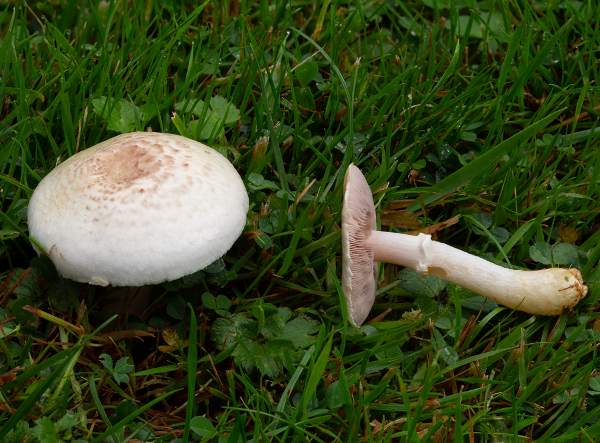
Etymology
The specific epithet comtulus, although misspelt, comes from a diminutive form of the Latin adjective comptus meaning combed, adorned or ornamented.
Identification guide
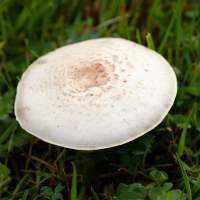 |
CapThe tiny (for an Agaricus species) cap expands to 1.5 to 3.5cm in diameter with a flattened central area. Its silky surface is whitish with a yellow tinge in the central region, which is covered in yellow to pinkish-brown fibrils. The cap flesh is white and does not change significantly when cut and exposed to air; it smells slightly of bitter almonds or of aniseed. |
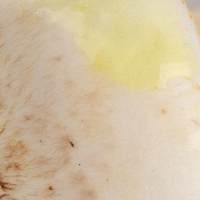 |
KOH testWhen Potassium Hydroxide (KOH) is applied to the cap surface it exhibits a positive reaction, turning yellow.. |
 |
GillsFree, crowded; bright pink, gradually turning grey-brown with age. |
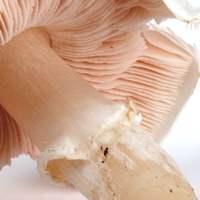 |
StemThe stem of Agaricus comtulus is 2-4cm long and 0.25-0.6cm diameter with a slightly bulbous or at least clavate base; white smooth or slightly fibrillose-floccose below a sometimes fleeting superior membranous ring. The cut stem fleshis white and slowly turns yellow. |
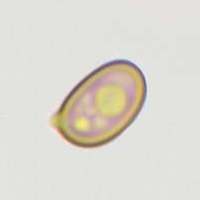 |
SporesEllipsoidal, smooth, 4.5-6 x 3.2-4.0μm; inamyloid. Spore printDark purple-brown. |
Odour/taste |
Smell and taste of bitter almonds or of aniseed. |
Habitat & Ecological role |
Saprobic, in parks, gardens and roadside verges and other grassy habitats. |
Season |
Late July to November in Britain and Ireland. |
Similar species |
Agaricus augustus also smells of almonds but it is a much larger mushroom and is found with conifers. |
Culinary Notes
Although reported to be edible, due to its small size and uncommon to rare occurrence the Mini Mushroom is not considered to be of significant culinary value.
Reference Sources
Fascinated by Fungi, 2nd Edition, Pat O'Reilly 2016, reprinted by Coch-y-bonddu Books in 2022.
British Mycological Society, English Names for Fungi
The genus Agaricus in Britain, 3rd Edition, self-published, Geoffrey Kibby 2011.
Funga Nordica: 2nd edition 2012. Edited by Knudsen, H. & Vesterholt, J. ISBN 9788798396130
Dictionary of the Fungi; Paul M. Kirk, Paul F. Cannon, David W. Minter and J. A. Stalpers; CABI, 2008
Taxonomic history and synonym information on these pages is drawn from many sources but in particular from the British Mycological Society's GB Checklist of Fungi.
Acknowledgements
This page includes pictures kindly contributed by David Kelly.
Fascinated by Fungi. Back by popular demand, Pat O'Reilly's best-selling 450-page hardback book is available now. The latest second edition was republished with a sparkling new cover design in September 2022 by Coch-y-Bonddu Books. Full details and copies are available from the publisher's online bookshop...
